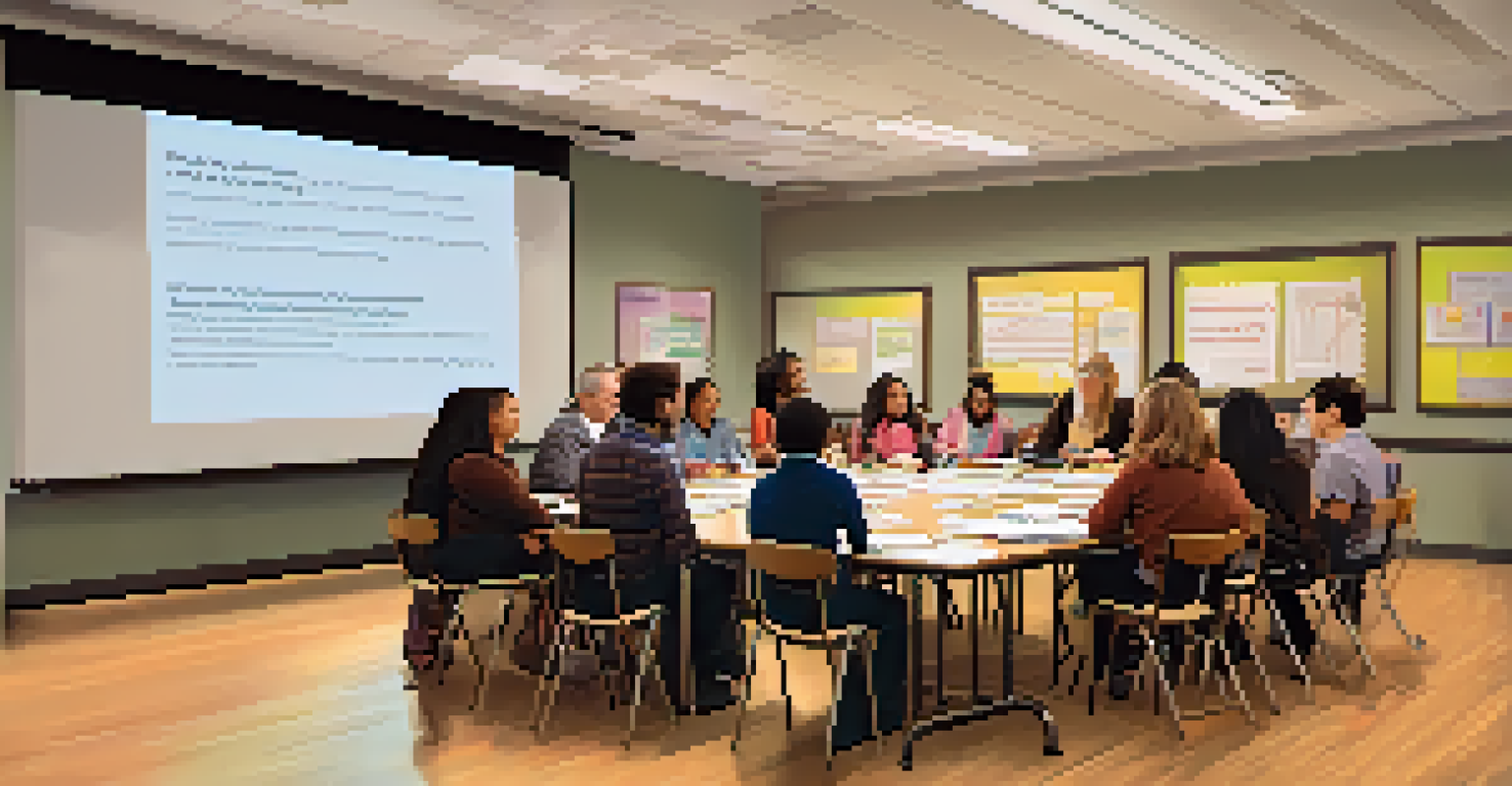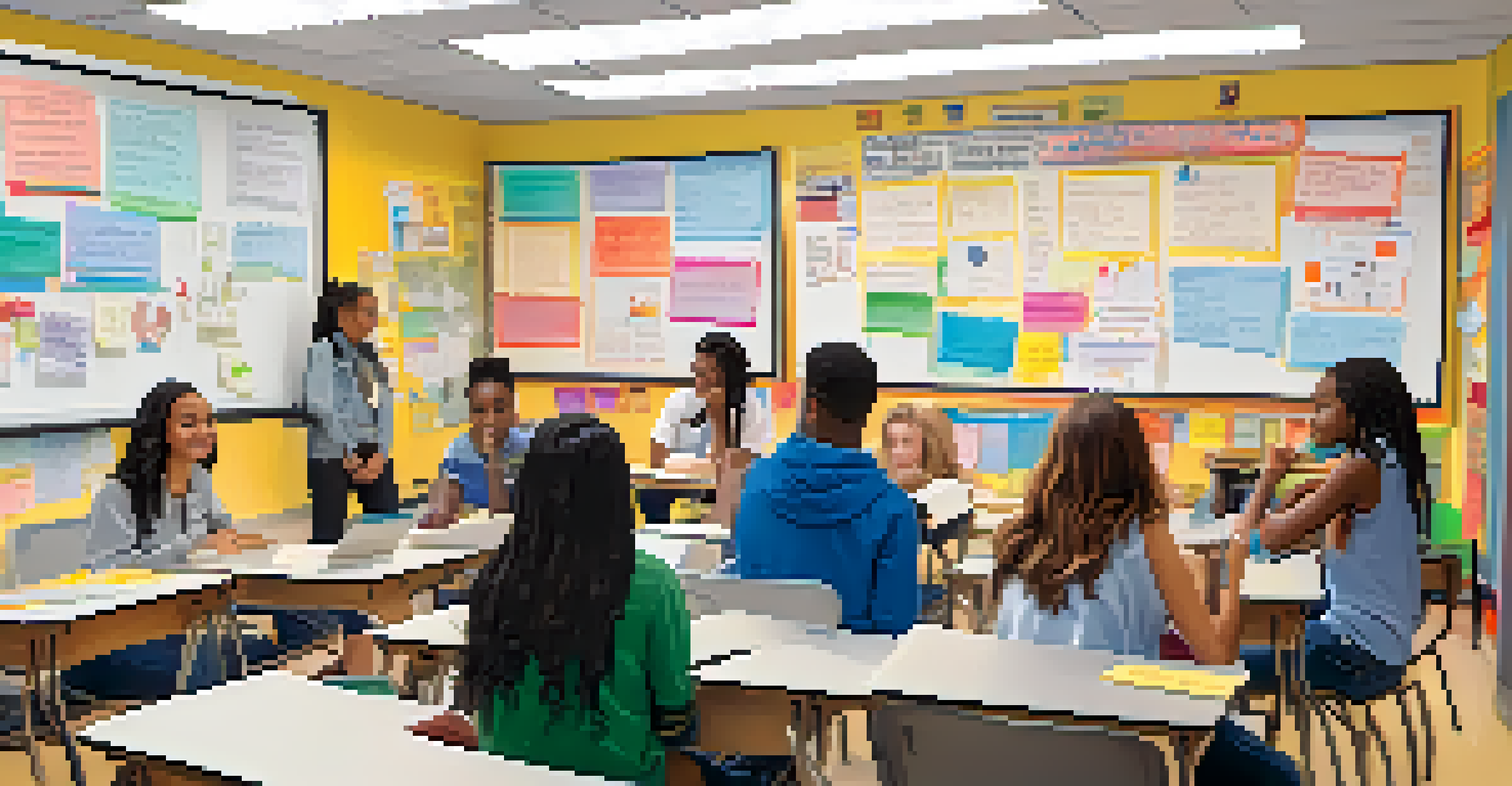How Community Engagement Shapes NYC's Education Landscape

Understanding Community Engagement in Education
Community engagement in education refers to the active participation of families, local organizations, and other stakeholders in the educational process. This involvement can take many forms, from volunteering in schools to participating in decision-making processes. Essentially, it aims to create a partnership between schools and the communities they serve, fostering a collaborative environment for learning.
Education is not preparation for life; education is life itself.
In New York City, where the education landscape is as diverse as its population, community engagement plays a critical role. It ensures that the voices of parents, students, and local leaders are heard and considered in shaping educational policies. When communities feel invested in their schools, the impact on student outcomes can be profound.
For example, initiatives like local school councils empower parents to contribute their insights and concerns directly to school administration. This level of involvement not only enhances accountability but also creates a sense of ownership among community members.
The Role of Parents in Shaping School Policies
Parents are often the first line of engagement in the educational landscape. Their perspectives and experiences can shed light on what works and what doesn't in schools. When parents actively participate, whether through meetings or advocacy, they help ensure that the needs of their children are prioritized.

In NYC, some schools have established parent-teacher organizations that serve as a bridge between families and school administration. These organizations allow parents to voice their concerns and collaborate on initiatives that directly affect their children’s education. The result is a more responsive educational system that adapts to the community’s needs.
Community Engagement Enhances Learning
Active participation from families and local organizations fosters a collaborative educational environment.
Moreover, when parents are engaged, they can support their children’s learning at home, reinforcing what is taught in schools. This home-school connection is vital for creating a cohesive educational experience that benefits students.
Local Organizations and Their Impact on Education
Local organizations, including non-profits and community groups, play a significant role in improving educational outcomes. They often provide resources, mentorship programs, and after-school activities that enrich students' learning experiences. By filling gaps in resources that schools may lack, these organizations help cultivate a supportive environment for students.
The only way to do great work is to love what you do.
In NYC, partnerships between schools and local organizations have led to innovative programs that address various challenges, such as literacy and social-emotional learning. For instance, organizations that focus on STEM education can offer workshops and tutoring that enhance students' skills in critical areas.
These collaborations also foster a sense of community. When organizations and schools work together, they create a network of support that benefits not only students but also families, reinforcing the idea that education is a community-wide effort.
Student Voice: Empowering the Next Generation
Empowering students to express their ideas and opinions is a crucial aspect of community engagement. When students are given a platform to voice their concerns, they feel more connected to their education and more motivated to succeed. NYC schools have started incorporating student councils and forums where students can discuss issues that matter to them.
For example, some high schools have established student-led initiatives that address topics like mental health and school safety. By allowing students to take the lead on these issues, schools demonstrate that they value their input and are committed to creating a safe and nurturing environment.
Parents Shape Educational Policies
Involvement of parents in school initiatives ensures that children's needs are prioritized in decision-making.
This empowerment not only enhances student engagement but also prepares them for future leadership roles. By actively participating in their education, students learn to advocate for themselves and their peers, fostering a sense of responsibility and community.
Challenges to Community Engagement in Education
While community engagement is vital, it does not come without challenges. One major hurdle is the varying levels of resources and support available to different communities. Some neighborhoods may lack the infrastructure to facilitate meaningful engagement, resulting in disparities in educational opportunities.
Additionally, communication barriers can hinder effective engagement. Language differences, cultural misunderstandings, and busy schedules can all create obstacles that prevent families from participating fully. Schools must navigate these challenges to ensure all voices are heard.
Despite these obstacles, many NYC schools are actively seeking solutions. By offering translation services, flexible meeting times, and culturally relevant programming, schools can break down barriers and foster a more inclusive environment for community engagement.
The Future of Education: A Community-Centric Approach
Looking ahead, it’s clear that a community-centric approach will shape the future of education in NYC. As schools continue to recognize the value of community engagement, we can expect to see more collaborative initiatives that bridge gaps and improve student outcomes. This shift is not just beneficial for students; it enriches the entire community.
Innovative practices, such as community-based learning and service projects, are becoming more prevalent. Schools are partnering with local businesses and organizations to provide real-world learning opportunities that extend beyond the classroom walls. This experiential approach not only enhances education but also strengthens community ties.
Student Voices Drive Change
Empowering students to express their opinions enhances their engagement and prepares them for future leadership.
Ultimately, as schools and communities work hand in hand, they create a more equitable educational landscape. By prioritizing engagement, we can cultivate a generation of learners who are not only academically proficient but also socially responsible and connected to their communities.
Celebrating Success Stories of Engagement
Across NYC, there are inspiring examples of successful community engagement that highlight its impact on education. Schools that have effectively engaged parents and local organizations often see remarkable improvements in student performance and overall school climate. These success stories serve as a testament to the power of collaboration.
For instance, a school in the Bronx established a partnership with a local gardening organization, transforming their playground into an outdoor classroom. This initiative not only enhanced students' understanding of science and nature but also brought families together to participate in gardening activities, fostering a sense of community.

Sharing these success stories is crucial for encouraging other schools to embrace community engagement. As more educators and leaders recognize the benefits, we can create a ripple effect that inspires positive change throughout the education system.